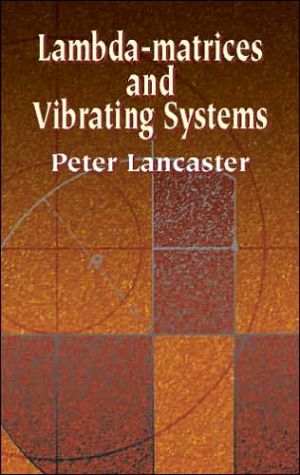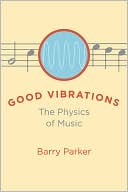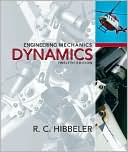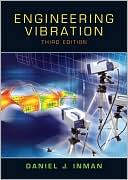Lambda-Matrices and Vibrating Systems
Features aspects and solutions of problems of linear vibrating systems with a finite number of degrees of freedom. Starts with development of necessary tools in matrix theory, followed by numerical procedures for relevant matrix formulations and relevant theory of differential equations. Minimum of mathematical abstraction; assumes a familiarity with matrix theory, elementary calculus. 1966 edition.
Search in google:
Originally appearing in 1966, this book considers several aspects of and solutions to the problems of linear vibrating systems with a finite number of degrees of freedom. The book assumes a familiarity with matrix theory and elementary calculus, but relies on a minimum of mathematical abstraction. Lancaster teaches at the University of Calgary. Annotation (c)2003 Book News, Inc., Portland, OR
Preface to the Dover EditionxiPrefacexviiChapter 1.A Sketch of Some Matrix Theory11.1Definitions11.2Column and Row Vectors31.3Square Matrices41.4Linear Dependence, Rank, and Degeneracy71.5Special Kinds of Matrices81.6Matrices Dependent on a Scalar Parameter; Latent Roots and Vectors101.7Eigenvalues and Vectors111.8Equivalent Matrices and Similar Matrices141.9The Jordan Canonical Form181.10Bounds for Eigenvalues20Chapter 2.Regular Pencils of Matrices and Eigenvalue Problems232.1Introduction232.2Orthogonality Properties of the Latent Vectors242.3The Inverse of a Simple Matrix Pencil272.4Application to the Eigenvalue Problem282.5The Constituent Matrices332.6Conditions for a Regular Pencil to be Simple352.7Geometric Implications of the Jordan Canonical Form382.8The Rayleigh Quotient392.9Simple Matrix Pencils with Latent Vectors in Common40Chapter 3.Lambda-Matrices, I423.1Introduction423.2A Canonical Form for Regular [lambda]-Matrices433.3Elementary Divisors453.4Division of Square [lambda]-Matrices473.5The Cayley-Hamilton Theorem493.6Decomposition of [lambda]-Matrices503.7Matrix Polynomials with a Matrix Argument53Chapter 4.Lambda-Matrices, II564.1Introduction564.2An Associated Matrix Pencil564.3The Inverse of a Simple [lambda]-Matrix in Spectral Form594.4Properties of the Latent Vectors644.5The Inverse of a Simple [lambda]-Matrix in Terms of its Adjoint674.6Lambda-matrices of the Second Degree684.7A Generalization of the Rayleigh Quotient714.8Derivatives of Multiple Eigenvalues73Chapter 5.Some Numerical Methods for Lambda-matrices755.1Introduction755.2A Rayleigh Quotient Iterative Process775.3Numerical Example for the RQ Algorithm795.4The Newton-Raphson Method815.5Methods Using the Trace Theorem825.6Iteration of Rational Functions865.7Behavior at Infinity895.8A Comparison of Algorithms905.9Algorithms for a Stability Problem925.10Illustration of the Stability Algorithms95Appendix to Chapter 598Chapter 6.Ordinary Differential Equations with Constant Coefficients1006.1Introduction1006.2General Solutions1016.3The Particular Integral when f(t) is Exponential1086.4One-point Boundary Conditions1096.5The Laplace Transform Method1116.6Second Order Differential Equations114Chapter 7.The Theory of Vibrating Systems1167.1Introduction1167.2Equations of Motion1177.3Solutions under the Action of Conservative Restoring Forces Only1227.4The Inhomogeneous Case1247.5Solutions Including the Effects of Viscous Internal Forces1257.6Overdamped Systems1307.7Gyroscopic Systems1357.8Sinusoidal Motion with Hysteretic Damping1377.9Solutions for Some Non-conservative Systems1387.10Some Properties of the Latent Vectors140Chapter 8.On the Theory of Resonance Testing1438.1Introduction1438.2The Method of Stationary Phase1448.3Properties of the Proper Numbers and Vectors1488.4Determination of the Natural Frequencies1528.5Determination of the Natural Modes153Appendix to Chapter 8156Chapter 9.Further Results for Systems with Damping1589.1Preliminaries1589.2Global Bounds for the Latent Roots when B is Symmetric1609.3The Use of Theorems on Bounds for Eigenvalues1629.4Preliminary Remarks on Perturbation Theory1689.5The Classical Perturbation Technique for Light Damping1719.6The Case of Coincident Undamped Natural Frequencies1749.7The Case of Neighboring Undamped Natural Frequencies178Bibliographical Notes184References187Index191








